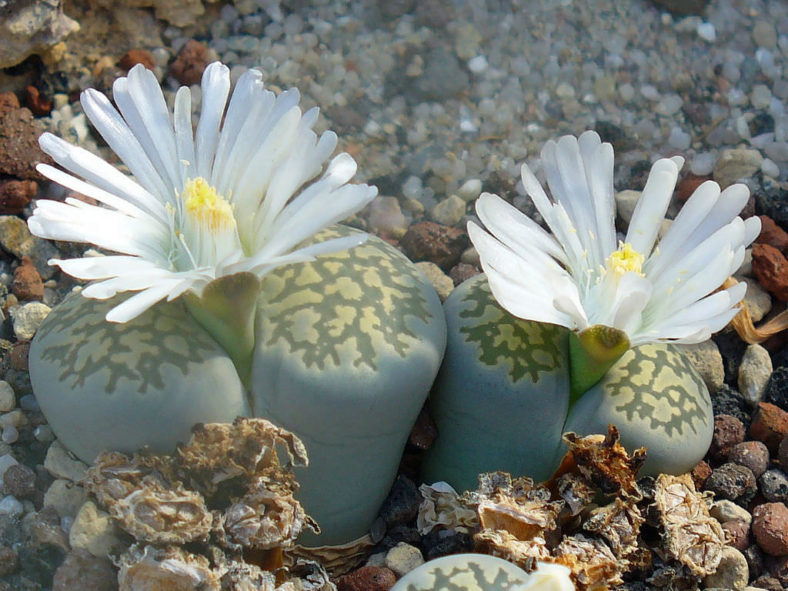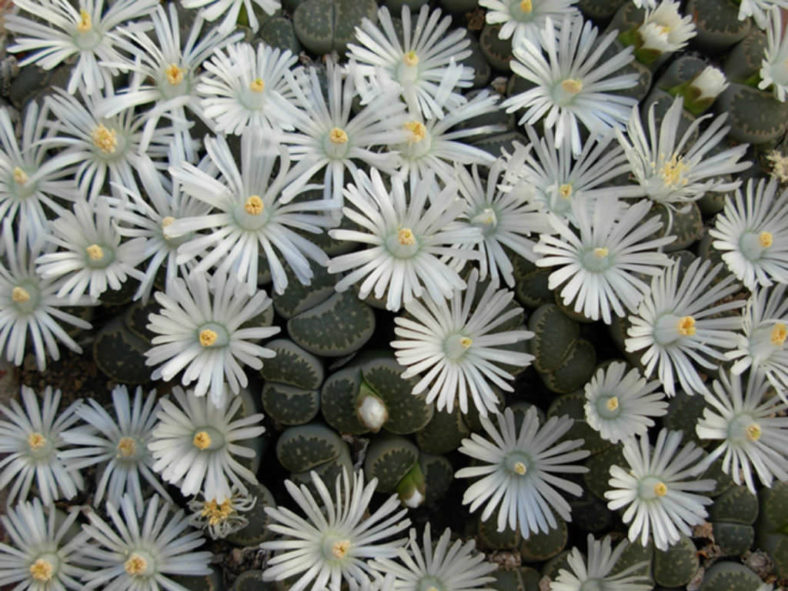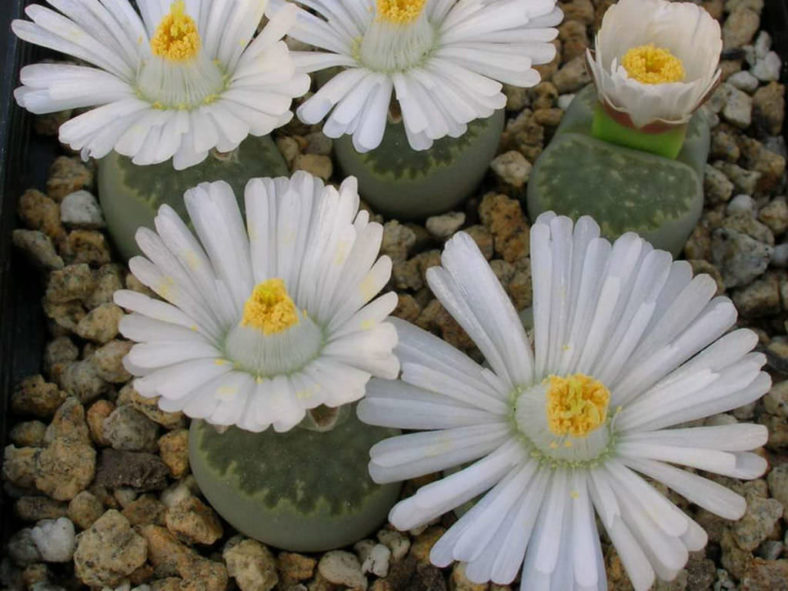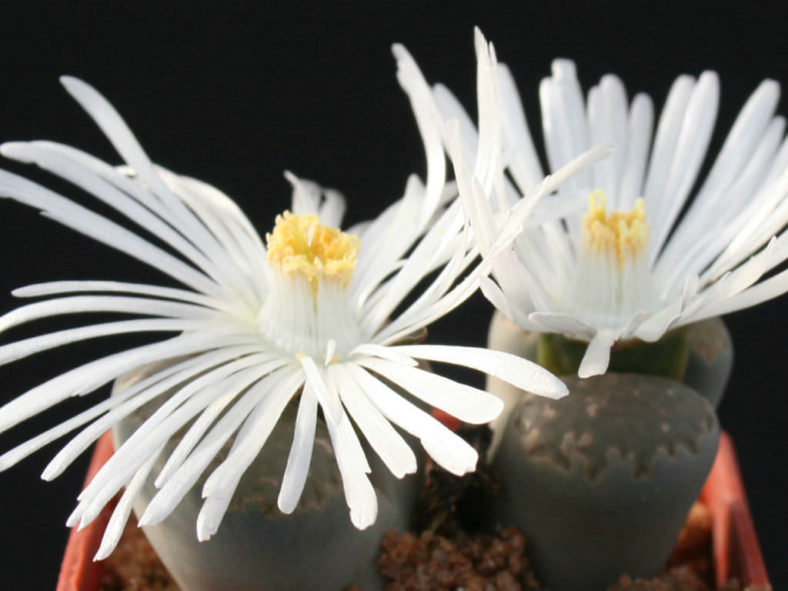Scientific Name
Lithops salicola L. Bolus
Common Name(s)
Living Stones, Salt-dwelling Living Stone
Scientific Classification
Family: Aizoaceae
Subfamily: Ruschioideae
Tribe: Ruschieae
Genus: Lithops
Etymology
The specific epithet "salicola" (pronounced "sal-ih-KOH-luh") means "salt-dweller" and refers to the occurrence of this species, often along edges of brackish pans.
Origin
Lithops salicola is native to South Africa. It grows in low limestone ridges or slopes, often along edges of brackish pans in the Free State and Northern Cape provinces.
Description
Lithops salicola is a dwarf succulent with a body of two opposite leaves, truncated in profile and divided by a shallow fissure through which the new pair of leaves and the flower appear. It can form a clump of up to 50 bodies. The bodies are thick, fleshy, green-gray with darker translucent channels at the upper surface, and can grow up to 0.8 inches (2 cm) tall. The upper surface is smooth and kidney-shaped, measuring up to 1.4 inches (3.5 cm) in length and up to 1 inch (2.5 cm) in width.
The white flower appears in the fall and can reach a diameter of 2 inches (5 cm). The fruit is a 5- or 6-locular capsule.

Hardiness
USDA hardiness zones 10a to 11b: from 30°F (-1.1°C) to 50°F (10°C).
How to Grow and Care
These plants develop a new set of leaves every year, with new leaves emerging in the fall and growing through the winter and into the summer. Lithops will go dormant in late summer, and water should be severely restricted to prevent bursting leaves. The flowers appear near the end of summer or fall, first showing up as a small bud forcing its way between the leaves, and growth will begin again. It's safe to water during this period. The leaves will still grow into the winter, but you should stop watering, even as the older leaves shrivel and encase the new growth. In the spring, it's safe to begin lightly watering again as the plant begins to grow again, heading toward its summer dormancy period and the emergence of new leaves in the fall.
Lithops are very slow-growing, small plants, making them ideal as houseplants (once you get the hang of their watering schedule). Older plants form attractive clumps of "pebbles" in their pots, which are highly prized. In general, plants should only be repotted if there are cultural problems (soggy soil) or the plant has outgrown its dish container, which will only happen every several years.
Learn more at How to Grow and Care for Lithops.
Links
- Back to genus Lithops
- Succupedia: Browse succulents by Scientific Name, Common Name, Genus, Family, USDA Hardiness Zone, Origin, or cacti by Genus
Photo Gallery
Click on a photo to see a larger version.


